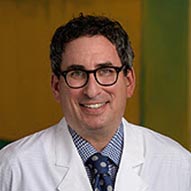Dallas
214-456-6660
Fax: 214-456-6696
At Children’s Health, we have unique expertise with this rare and often under-diagnosed condition. We developed a way to diagnose and treat children so that they won’t have repeated strokes. We have diagnosed about 25% of the cases found in children globally over the past few years.
When a child has bow hunter’s syndrome, an important artery carrying blood to the back of the brain is blocked. This blocking of blood to the brain is called a stroke.
Although bow hunter’s syndrome usually occurs in adults, it also can happen in children. Its name comes from the position of the head when a person shoots an arrow. When children have this condition, turning their head compresses blood vessels at the back of the head, which tears a blood vessel and causes a stroke.
The part of the blood vessel that was torn can remain weak and put a child at risk for repeated strokes. Early diagnosis and treatment can help reduce that risk. In a child, a stroke can be very serious and can affect their ability to walk, see, speak or read.
Children with bow hunter’s syndrome will have symptoms of a stroke at the back of the head. These symptoms can occur suddenly and include:
When a child has symptoms of a stroke at the back of the neck, we do imaging of the brain and of the blood vessels in the neck. If we find that one of the two arteries running to the back of the brain through the spine has been damaged near the second vertebrae, we place the child in a cervical collar. To prevent future strokes, we do a special kind of X-ray called a dynamic angiogram a few months later. This test shows a map of blood circulation and can detect tears or breaks in blood vessels. If one of the damaged arteries gets blocked when the head is turned, it confirms the diagnosis of bow hunter’s syndrome.
We do not know what causes this rare condition in children. Some children may have neck vertebrae that are particularly mobile, which puts them at higher risk for this condition. Other children may have a disorder that causes their blood to clot very easily.
Right after they have been diagnosed, a child needs to be treated immediately with a medication like Heparin that prevents blood clots and helps the blood vessel heal. They also need to wear a neck brace so that they won’t have another stroke if they turn their head. Once they are diagnosed with bow hunter’s syndrome and the stroke is stabilized, we will do surgery. Usually we will fuse two bones in the neck (first and second vertebrae) to prevent another stroke.
At Children’s Health℠, our approach to diagnosing and treating this condition is highly effective.
Children with bow hunter’s syndrome are cared for by a team that has unique experience dealing with this rare condition.


The surgery fusing neck bones affects children of different ages in different ways. A younger child may be able to move their neck typically at first, but as they get older, they will have less flexibility. A teenager may only be able to turn their head about halfway.
Because of our care team’s deep experience with treating this condition, the surgery is very safe.